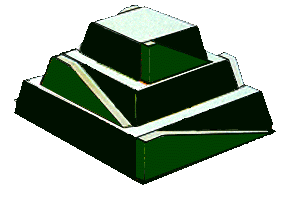|
|
The Giza Pyramids
We do know that they were meant to be burial chambers for the pharaohs, the ancient god-kings of the civilization on the Nile. The tombs were filled with gold, gifts, and other things to accompany the ruler's ascension to the next life. Why were the pyramids built so high? The Egyptians believed that the rulers' spirits would be higher to the gods that way. Why were so many passages hidden inside? We still don't know. A likely explanation is to allow the pharaoh's spirit places to wander, but that explanation isn't held by every Egyptologist. Why were the pyramids built facing a certain direction? The ancient Egyptians believed in the power of Ra, the sun god. They wanted to welcome his power and presence into not only their daily lives but also the afterlives of the pharaohs. How were the pyramids constructed? Nobody STILL knows for sure. Two theories that have received the most credibility are two competing versions of a Ramp Theory, which states that the master-driven slaves of ancient Egypt carried the heavy stones up ramps built on the side of the pyramid.
Both of these theories have their proponents and have both been tested using models and simulations. How were the pyramids built? We may never know.
Graphics courtesy of ArtToday
|
Sponsor
Social Studies
|



 The one-ramp theory says that one ramp was built on each side. The ramp would have been built along with the rest of the pyramid and then, presumably, dismantled afterward.
The one-ramp theory says that one ramp was built on each side. The ramp would have been built along with the rest of the pyramid and then, presumably, dismantled afterward.  The many-ramps theory says that the ramps were built in a sort of surrounding fashion, so that the workers could walk up to different levels.
The many-ramps theory says that the ramps were built in a sort of surrounding fashion, so that the workers could walk up to different levels. 